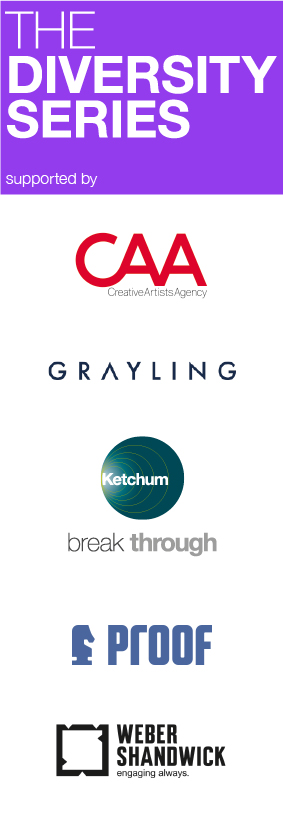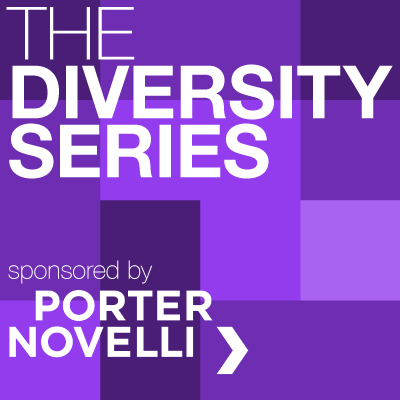Porter Novelli 02 Oct 2017 // 6:23PM GMT

By Brad MacAfee, Porter Novelli
Often, when agencies discuss the importance of diversity, naturally, it’s from our own perspective -- how to attract and retain talent and the importance of an inclusive culture. More agencies are realizing diversity as a business imperative to drive results. Rarely, however, do I hear agencies discussing the value of diversity from their clients’ perspectives and how to drive innovation for their business.
Today, we see more and more corporate clients and prospects pushing agencies through RFPs and other challenges to achieve supplier diversity and diverse teams. These efforts aren’t limited to marketing and public relations agencies either. Major companies like Facebook and Microsoft among others are also seeking greater diversity from other professional services firms like outside legal counsel and accounting. While the attention on action is very necessary, we still need to look beyond the carrot and the stick and ask why. Perhaps we often skip that step because the answer seems so obvious, but deeply understanding why our clients want us to be more diverse is critical.
I had the pleasure of presenting the PR Council’s In-House Diversity Champion award to HP CMO Antonio Lucio last month. Antonio has done an incredible job of putting a spotlight on diversity through HP’s marketing challenge to agency partners. HP and others are spurring industry change and accountability through scorecards that promote diverse client team make-up. However, it’s important that we pause a moment to remember why this challenge was issued in the first place: “If you believe in innovation, if you believe in constant improvement, diversity becomes a business imperative. It’s much more than a values issue although it is a values issue, as well. We believe our ability to deliver more and better innovation from a product standpoint and our ability to connect with our customers around the world will improve by having teams that are diverse in their composition.”
Typically, when agencies land a client today, we immediately begin focusing on team selection. Who has the best experience, skills, personality match, location and availability for this particular client need? All are certainly important; however, more and more, we should be thinking beyond the typical to consider how we can drive innovation for our clients through diversity. We should ask ourselves:
-
Do our teams reflect the customers we’re trying to reach?
-
Do our teams offer a variety of skills and approaches?
-
Do our team members bring a world view?
Thomas Friedman in his landmark book “The World is Flat” spoke of the removal of barriers that once prevented individuals from communicating and collaborating across borders. We can no longer operate as we once did and expect the same results. Please humor me a moment as you consider his take on “average” with similar status-quo terms like “uniformity” and “monoculture” and apply it to our industry:
“In the past, workers with average [uniform/monocultural] skills, doing an average [a uniform/monocultural] job, could earn an average [a uniform/monocultural] lifestyle. But, today, average [uniformity/monoculture] is officially over. Being average [uniform/monocultural] just won’t earn you what it used to. It can’t when so many more employers [clients] have so much more access to so much more above average cheap foreign labor, robotics, software, automation and genius. Therefore, everyone needs to find their extra – their unique value contribution that makes whatever is their field of employment. Average [uniformity/monoculture] is over.”
At Porter Novelli, our goal is to integrate diversity and inclusion into everything we do. We are addressing the questions above in a number of ways:
-
Talent Initiatives Should Become Table Stakes. To ensure that our teams are more reflective of our clients’ customers and the communities we serve, we have ambitious goals to address the hiring and retention of diverse and underrepresented talent at all levels of our organization. We’re actively trying to create a more inclusive culture, address bias through training and development, build empathy through dialogue, and support causes and issues that are meaningful to our staff so they feel comfortable bringing their whole selves to work. This isn’t easy. In fact, it is very, very hard. It’s necessary and as an industry we all have far to go, but through the perspective of our clients and prospects and certainly our people, diversity talent initiatives and the greater representation in our organizations should become table stakes.
-
Diversity of Thought is Critical to Innovation. To quote my good friend Frans Johansson, author of The Medici Effect: “Innovation comes ultimately from a diversity of perspectives. So when you combine ideas from different industries or different cultures, that’s when you have the best sense of developing groundbreaking ideas.” Our goal from the beginning has been to align the best talent to client work, enhance our skillsets to meet where our clients need us to go and build diversity into our way of working. We launched the Porter Novelli Communities model earlier this year to instill diversity of thought and experience across our client teams. This model embraces our diverse talent and drives more meaningful collaboration. Under the communities model, each of our account teams have representation from those who:
-
provide deep audience understanding and insights
-
bring important perspectives of the client’s business, industry and marketplace
-
understand cultural context and bring creative ideas, inspiration and unique delivery mechanisms across the communications spectrum
-
generate unique ways to bring campaigns to life
These diverse perspectives create a culture of innovation, as client teams actively engage, learn and connect. They help us serve as more strategic partners to our clients.
-
-
Secondements Promote Diversity of Experience. For those who travel for work or pleasure, have spent a college year abroad, or regularly cross cultures as part of an immigrant community, you know the value of a broad world view. Clients are seeking cultural competence, empathy and curiosity from their client counselors. One of the ways Porter Novelli supports discovery and development, is through 4-6 week secondements in other Porter Novelli offices around the globe. These opportunities help our colleagues learn about other cultures while working on global business or other specialty areas. In 2018, we will also be piloting a new program that features two-week cross-discipline secondements with other Omnicom marketing agencies. These experiences not only benefit the individual, it fosters cross-cultural exchanges for the offices and teams involved, as well.
Ayanna Robinson, the most recent of winner of Porter Novelli’s internal Liberate Greatness Award, is an executive vice president and client relationship leader for Crop Science, a division of Bayer. Under Ayanna’s leadership, Bayer has won numerous industry awards. She and her team do inspiring work that address food security around the globe. She credits their success on having one of the most diverse teams in the agency and for living out the communities model. While she easily can claim racial, gender, experience and location diversity in terms of the team’s make-up, interestingly, she points to age diversity as an important factor in sparking great ideas: “Our team includes three generations from Baby Boomers to Millennials, which provides diverse thinking on how to engage with consumers and media. Watching the 360-degree learning take place each day is something to behold. For example, our Baby Boomers are honing the pitch chops of our Millennials, and our Millennials are introducing more influencer marketing techniques to promote a narrative. Our brainstorms and plans are definitely stronger because of the range of experience and perspective.”
Jeff Donald, who manages external communications for Crop Science, a division of Bayer, concurs. “There’s a level of respect and admiration among the different generations on this team that is rare, refreshing, and invaluable. Diversity on paper is one thing, but diverse members operating as a high-performing team requires a commitment to building an open-minded culture and that’s a testament to Ayanna’s leadership. From a client perspective, I feel like we’re better equipped to handle challenges by thinking through issues from the start through a variety of perspectives. They bring out the best in each other.”
The research is clear. Organizations that are more diverse perform better on every metric. It’s no wonder that clients who consider their agencies as extensions of their teams need us to be diverse and drive innovation. Yes, diversity is a moral imperative. We must do all that we can to create diverse and inclusive environments because it is the right thing to do. We also need to recognize that we are a part of our clients’ innovation requirements, giving us greater dimension in our understanding of diversity and inclusion as a business imperative.
# # #
Brad MacAfee is chief executive officer and senior partner of Porter Novell.


































.jpg)













